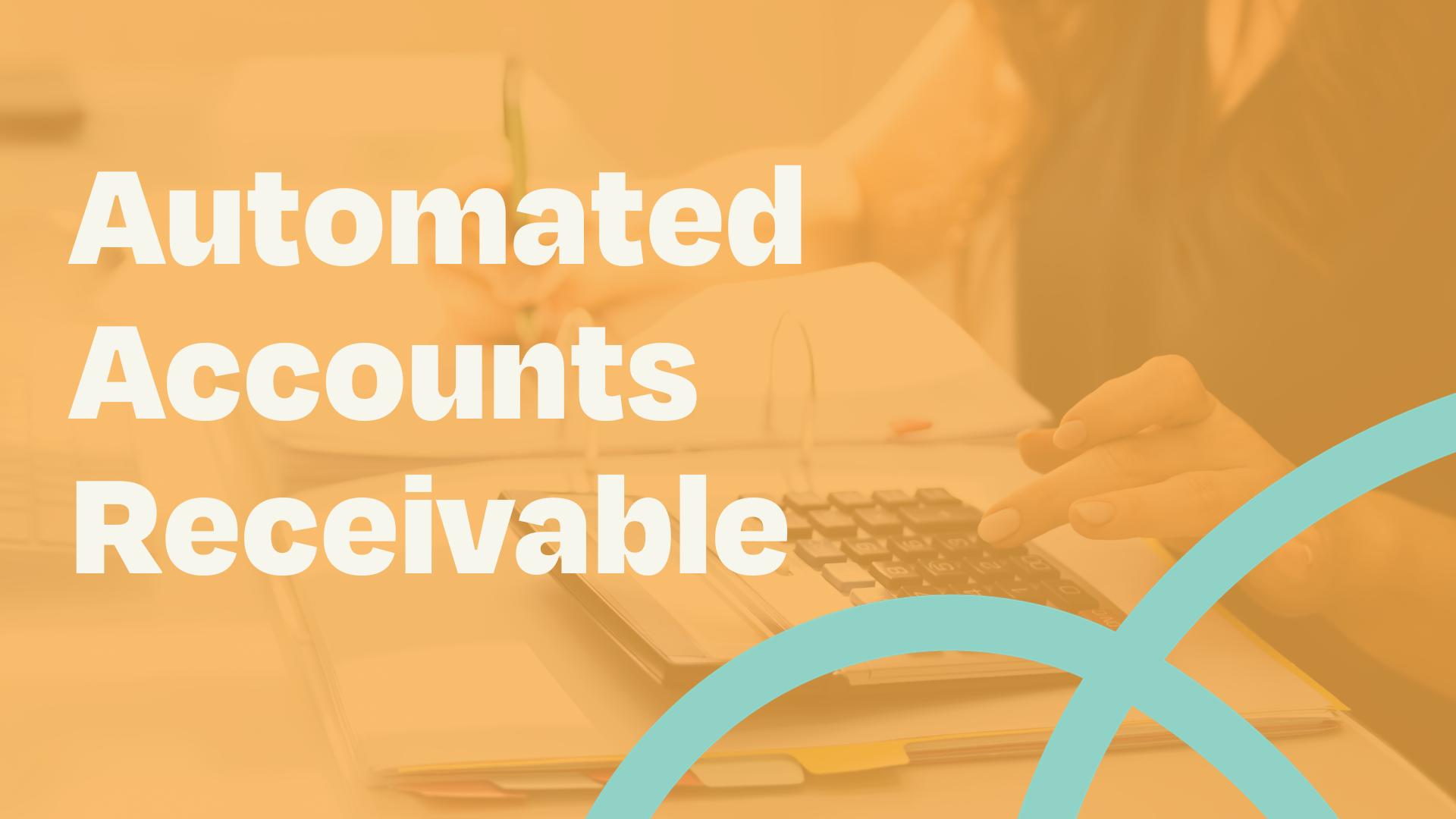Automate Accounts Receivable for Increased Productivity
Welcome to another thrilling journey through the captivating world of accounting. Now, don't hit that back button just yet! We promise, this isn't...
8 min read
Enzo O'Hara Garza
:
August 15, 2023
.png)
Cash flow management is the lifeblood of any thriving business. A crucial component of that mechanism is the Accounts Payable (AP) process. It's like the beating heart of your business, pumping life-giving cash out to vendors, suppliers, and anyone else you owe. But if your heart is laboring under the strain of manual processes, it's time to give it a helping hand. How, you ask? By automating the accounts payable process!
|
Table of Contents |
|
What Is Accounts Payable? |
|
What Is the Accounts Payable Process? |
|
What is accounts payable process automation? |
|
Benefits of Automating Accounts Payable |
|
How to Automate Accounts Payable |
|
The ROI of AP Automation |
|
FAQs |
Before we dive into the nitty-gritty, let's get our definitions straight. Accounts payable, in the simplest terms, refers to the money a company owes to its suppliers or vendors for goods or services received. This could range from office supplies to rental payments, and everything in between.
Let's pull back the curtain on the accounts payable process to understand it in more depth, especially the manual processes that can take up a sizable chunk of your time.
The accounts payable process, in its traditional form, is a series of steps that ensure your business pays off its debts in a timely and organized manner. While it might sound simple, it's actually a multifaceted process involving several steps.
The process starts when your business receives an invoice from a supplier or vendor. This could be a physical paper invoice or a digital one sent via email. For paper invoices, someone has to manually record the details of the invoice into the company's accounting system.
The invoice then needs to be reviewed for accuracy. This involves checking the details such as the supplier's name, the invoice number, the date, the items listed, the amounts, and any other relevant details. This step is crucial to prevent fraudulent invoices from being paid, and to ensure that the details match what was agreed upon with the supplier.
Once the invoice has been reviewed, it needs to be approved for payment. Depending on the size and structure of the company, this approval may need to come from one or several individuals. For example, a department manager might need to approve an invoice before it's sent to the finance department.
This is one of the most time-consuming steps in the manual process. Before an invoice can be paid, it needs to be matched with the relevant purchase order (PO) and delivery receipt. This three-way match ensures that what was ordered was actually received, and that the invoice accurately reflects the agreed-upon price.
After the invoice has been approved and matched, it's time to schedule the payment. This involves entering the payment details into the company's banking system and scheduling it for the due date. This step also needs to be double-checked to prevent any errors in payment.
Finally, all the details of the transaction, including the invoice, the approval, the PO, and the payment details, need to be recorded and filed for future reference. This is crucial for audit purposes and for maintaining accurate financial records.
This is a method that minimizes human intervention by using software to handle several parts of the AP process. It's like having a super-efficient, error-proof robot taking care of all the tedious, repetitive tasks. The robot can automatically match purchase orders with invoices, flag discrepancies for manual review, schedule payments, and even generate reports.
In the world of accounts payable, time is money. No, really! Every minute spent sorting through stacks of invoices, cross-referencing purchase orders, and manually entering data is a minute that could be spent on strategic tasks that help your business grow. The good news is, there's a better way to manage your accounts payable - and it's called automation. If you've ever wondered whether it's worth trading in your manual processes for a shiny new automated system, we're here to help shed some light on the matter. Let's delve into the myriad benefits of automating your accounts payable process.
With an automated system, you can process invoices faster, which means you can pay them faster. And faster payments mean you can take advantage of early payment discounts, which can be a significant cost saving.
Even the most meticulous of us can make a mistake when we're keying in data. An automated system eliminates manual data entry, vastly reducing the potential for errors.
With all the data processed and stored digitally, you can generate reports, analyze trends, and monitor key metrics at the click of a button.
By reducing errors, taking advantage of early payment discounts, and freeing up staff time for more strategic tasks, you can save significant costs. Moreover, with better visibility into your payables, you can manage your cash flow more effectively.
The advantages of automating accounts payable are plentiful. From cost and time savings to improved accuracy, enhanced control, and better supplier relationships, automation is a potent tool in the arsenal of a forward-thinking business. While the transition might seem daunting, the benefits are well worth it. As they say, the best time to plant a tree was 20 years ago. The second-best time is now. So, why not take that step towards automation today? Remember, every journey begins with a single step, and the team at Accountingprose is here to guide you every step of the way on your path to automation success.
Automating your accounts payable (AP) process can help you save time and money, improve efficiency, and reduce errors. Here are some ways to automate AP in a small business:
This eliminates the need to manually enter invoice data, which can be time-consuming and error-prone. Many vendors now offer electronic invoicing, which can be sent directly to your accounting software.
Once invoices are received, you can automate the approval process by setting up rules and workflows. For example, you can automatically route invoices to specific approvers based on the amount, vendor, or type of expense.
This involves comparing invoices to purchase orders and receiving reports to ensure that all goods and services have been received and are accurate. AP automation software can automate invoice matching by using optical character recognition (OCR) to extract data from invoices and comparing it to your existing records.
Once invoices have been approved and matched, you can automate payments to vendors. This can be done via electronic funds transfer (EFT) or by writing and mailing checks. AP automation software can also automate payments by creating payment batches and sending them to your bank for processing
Navigating the realm of accounting software might seem challenging, but it's a crucial aspect of efficient and effective financial management. At Accountingprose, we pride ourselves on being well-versed in this field, and we're committed to sharing our expertise with you. To that end, we've identified five top-tier accounts payable automation software solutions that we highly recommend: Xero, Ramp, Melio, Bill.com, and Zapier.
First, there's Xero, a robust accounting software that provides real-time access to your cash flow details. This tool offers a clear, comprehensive view of your financial health, making it an invaluable asset for any business aiming for financial transparency and control.
Secondly, we recommend Ramp, a corporate card designed to give businesses unparalleled control over their expenses. With detailed tracking and reporting features, Ramp allows you to keep a close eye on your spending, ensuring that your budget remains on track.
Next, consider Melio, a digital payment solution that simplifies the management of payables. With Melio, you can easily schedule and monitor payments, making it an excellent tool for maintaining a healthy cash flow.
Then there's Bill.com, a comprehensive financial operations platform that streamlines your accounts payable and receivable. With an array of features designed to provide a complete overview of your transactions and facilitate control over your payment processes, Bill.com is a powerful ally in managing your business's financial operations.
Finally, we recommend Zapier, a tool that connects your various software applications to improve overall productivity. Zapier automates repetitive tasks across different platforms, allowing your systems to work together seamlessly and enhancing the efficiency of your operations.
These five tools each bring unique strengths to your financial management processes. By streamlining operations, providing valuable insights, and enhancing control over your finances, they can greatly contribute to your business's success. We encourage you to explore these options and see how they can benefit your organization.
he ROI of accounts payable (AP) automation can vary depending on the size and complexity of your business, but it is generally a very worthwhile investment. Here are some of the ways that AP automation can save you money:
Reduce labor costs. AP automation can free up your AP staff to focus on more strategic tasks, such as managing supplier relationships and improving cash flow.
Reduce errors. AP automation can help to reduce errors in invoice processing, such as duplicate payments, incorrect payments, and late payments.
Take advantage of early payment discounts. AP automation can help you to identify and take advantage of early payment discounts offered by vendors.
Improve cash flow. AP automation can help you to improve cash flow by streamlining the invoice processing and payment process.
According to the Association for Intelligent Information Management (AIIM), businesses can save an average of $12 per invoice by automating their AP process. This means that a business that processes 10,000 invoices per year could save over $120,000 per year by automating AP.
In addition to the financial benefits, AP automation can also provide a number of other benefits, such as:
Improved visibility and control over the AP process. AP automation can provide you with real-time visibility into the AP process, which can help you to identify and resolve bottlenecks and problems more quickly.
Enhanced compliance. AP automation can help you to comply with financial regulations and ensure that your AP processes are auditable.
Improved supplier relationships. AP automation can help you to improve your relationships with suppliers by streamlining the payment process and reducing errors.
AP automation can be a very worthwhile investment for businesses of all sizes. By automating your AP process, you can save time and money, improve efficiency, reduce errors, and improve your relationships with suppliers.
Here are some additional benefits of AP automation that can contribute to ROI:
Reduced risk of fraud. AP automation can help to reduce the risk of fraud by automating tasks such as invoice approval and payment.
Improved customer service. AP automation can help to improve customer service by ensuring that invoices are processed and paid on time and accurately.
Increased productivity. AP automation can help to increase the productivity of your AP staff by freeing them up to focus on more strategic tasks.
The ROI of AP automation can be significant for businesses of all sizes. By automating your AP process, you can save time and money, improve efficiency and accuracy, and reduce risk.
AP automation involves implementing software that can automate various parts of the AP process. This includes receiving and processing invoices, matching invoices to purchase orders, coding invoices, approving payments, and generating reports.
We automate accounts payable to increase efficiency, reduce errors, improve control over payments, and save costs. An automated system can process invoices faster, allowing you to take advantage of early payment discounts. It also reduces the chance of errors from manual data entry, and gives you better visibility into your financial data.
AP Automation is the use of technology to streamline and automate the accounts payable process. The technology can automatically extract data from e-invoices, match invoices with purchase orders, code and classify invoices, and schedule payments. All this can significantly reduce the time and effort required to process invoices.
Key controls in the AP process include invoice approval, segregation of duties (the person approving the invoice should not be the same person making the payment), matching of invoices to purchase orders, and regular reviews and audits.
The cost of automating AP can vary depending on the size of your business, the volume of invoices you process, the complexity of your AP process, and the specific software solution you choose. However, the cost savings from increased efficiency, reduced errors, and lower staffing costs can often justify the investment.
Automating your accounts payable process is not just a nice-to-have – it's a game-changer. It's like swapping out your old, beat-up car for a sleek, high-performance race car. Sure, both will get you from A to B, but one will do it faster, more efficiently, and with a lot less stress. So why not take the plunge and automate your accounts payable process today? Your business, your team, and your suppliers will thank you!
Remember, the team at Accountingprose is always here to help you navigate these new waters. Whether you need advice on choosing the right software, setting up your new system, or even managing your newly automated AP process, don't hesitate to get in touch. Because at Accountingprose, we're not just about numbers – we're about people. And we're committed to your success, every step of the way.
Now go forth and automate!

Welcome to another thrilling journey through the captivating world of accounting. Now, don't hit that back button just yet! We promise, this isn't...

1 min read
In our tech-filled world, businesses are quickly adopting automated solutions. These tools streamline operations, boost efficiency, and provide an...

1 min read
Welcome to the future, where technology is transforming the way we do business. One area experiencing significant change is accounting. Gone are the...